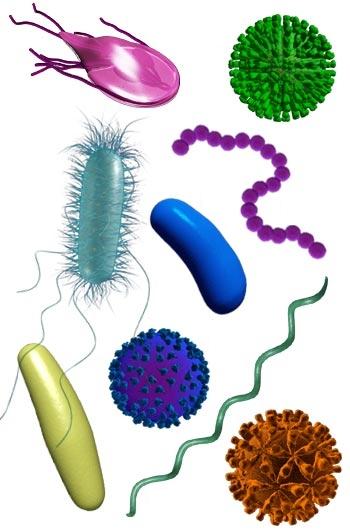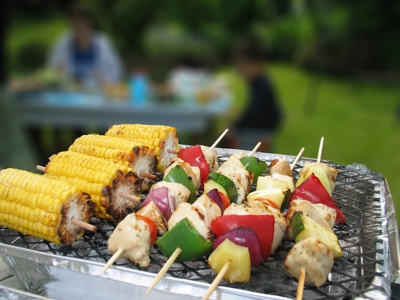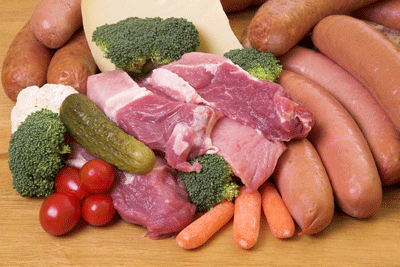According to the Centers for Disease Control, roughly one and six Americans (about 48 million people) get sick every year with a foodborne illness. Of those, over 125,000 are hospitalized and about 3,000 die. Interestingly, the CDC breaks foodborne illnesses into two subcategories: known pathogens, such as E.coli, salmonella, norovirus, and campylobacter, and unspecified agents, which may include chemicals in food “whose ability to cause illness is unproven.”
Foodborne Illness Peaks in Summer Months
 According to the USDA Food Safety and Inspection Service (FSIS), foodborne illness peaks in the summer months. In the summer, many conditions exist in a “perfect storm” of events that can lead to food poisoning. Conditions that lead to the rise of foodborne illness include:
According to the USDA Food Safety and Inspection Service (FSIS), foodborne illness peaks in the summer months. In the summer, many conditions exist in a “perfect storm” of events that can lead to food poisoning. Conditions that lead to the rise of foodborne illness include:
- Bacteria and microorganisms grow more quickly in the warmth of summer – 90 degrees to 110 degrees provides ideal growing conditions for bacteria.
- Summertime also tends to be humid, another condition that supports the growth of bacteria and microorganisms.
- People cook and eat outdoors more, and the outdoors doesn’t provide the controlled environment of a kitchen, which is specifically designed to discourage bacterial growth and proliferation
Foods that Can Become Contaminated
Without proper caution, any food can become contaminated with harmful bacteria and other microorganisms. There have been nearly as many reports of people being sickened by fruit and vegetables as animal proteins. Still, some foods are more likely to contain harmful bacteria than others. In 2009, the Centers for Science in the Public Interest released a report listing the 10 foods that account for nearly 40 percent of all foodborne related outbreaks. These foods included:
Other foods with particular bacterial susceptibility in summer months include animal proteins, mayonnaise, salad dressing, and many others.
How to Protect Yourself and Your Family
So should you stop eating healthful foods such as tomatoes, spinach, sprouts, and berries in order to protect yourself from foodborne illness? Absolutely not! These healthful foods provide your body with the essential vitamins, nutrients, and enzymes it needs for good health. There are steps you can take, however, to minimize your risks of developing foodborne illness.
- Build your immunity. The best defense against foodborne pathogens is your body’s immune system. Immunity plays a key role in susceptibility to all types of illnesses. For example, why is it that in a family exposed to the same germs and illnesses, one person gets sick while the other doesn’t? The answer lies in the immune system.

- Store foods at the proper temperature. Refrigerate foods right away when you’re done eating them – don’t leave them sitting out. Likewise, if you have a buffet, keep cold foods cool by putting them out right before eating, setting them over ice, and refrigerating them just as soon as you’re done. If you are camping or picnicking, pack foods in an insulated cooler with multiple ice packs, and keep the cooler out of direct sunlight.
- Handle leftovers appropriately. If it’s hot out, throw away any food left out over one hour.
- Keep clean. Washing your hands in warm soapy water before handling food is essential. If you don’t have access to warm water, bring something such as a wet soapy washcloth in a Ziploc bag to use for cleanup. You should also wipe down all surfaces before preparing or serving food from them.
- Beware of cross-contamination. Separate fruits and vegetables from animal proteins, and store everything in airtight containers. If you do eat animal protein, cut it on a separate cutting board from fruits and vegetables.
- Wash your produce. Even if produce says it is “triple washed,” it’s best to wash your own produce before you eat it. This includes produce you peel before eating. With harder produce such as apples, you can even scrub it with a soft bristled brush to remove harmful bacteria. Pat produce dry with a paper towel before eating.
- Avoid factory farmed animal proteins. If you are a meat eater, then the type of animal protein you choose can greatly decrease your chance of developing a foodborne illness. Factory farming practices are far more likely to yield contaminated proteins. Opt for animal protein from local, organic growers that use free-range practices.
- If you eat meat, cook it to the right temperature. You can visit FoodSafey.gov to see their Safe Minimum Cooking Temperatures chart. Use an instant read thermometer to ensure you are cooking your animal protein to the appropriate temperature.




Great reminders. It’s always handy to know the reasons Mom said to wash your hands. Love the book, Kimberly.
Hi Kim,
First, thank you for sharing your knowledge through the BDS book. I’m so happy that I bought it!
I read Fit for Life many years ago, and cut back drastically on my dairy intake at that time. I am also not a huge fan of meat (though I do like fish sometimes..) Because I felt like my diet was fairly healthy to begin with, I started BDS with the second phase. I now go back and forth between phase 2 and 3 (I forget the names) I still feel very hungry in the morning after my GGS…sometimes I get to 10:30 and just have to eat my lunch..my question is, how long until my body will become more used to just a GGS without feeling so hungry? Should I have transitioned slower? Any help is appreciated.
Thank you!!
Courtenay :-)
Thanks for these great tips!
I just bought ground flaxseed so I can sprinkle over my salads as you suggest in the BDS ;-) How long should I soak these for? How about chia seeds?
Very great post. I just stumbled upon your blog and wished to say that I’ve really enjoyed surfing around your blog posts. After all I’ll be subscribing for your feed and I am hoping you write once more soon!